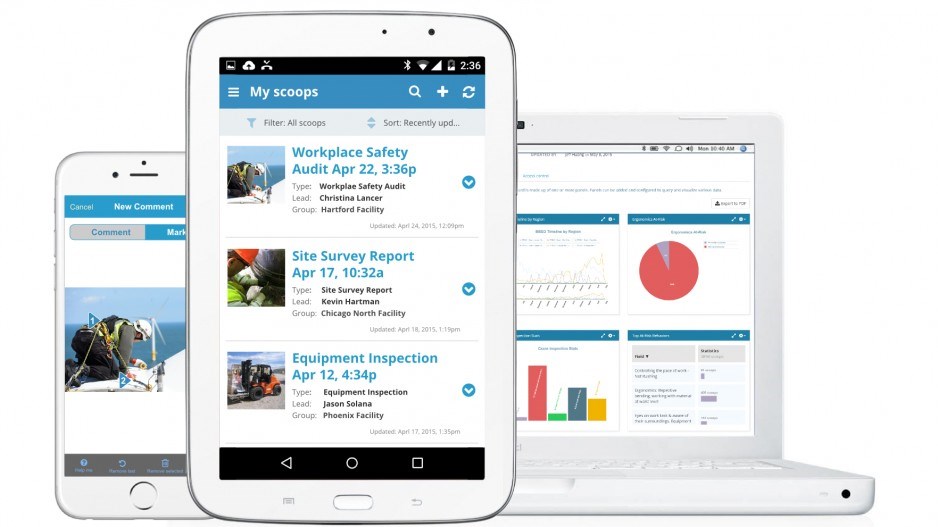Whether it’s counting calories, buying tickets to the movies or checking the weather, consumers are using apps in all aspects of their day-to-day lives.
“But when we come to work, we don’t have apps for different processes,” says Babak Sardary.
The CEO of Trusterra Technologies believes there’s plenty of room to change that in the enterprise market, where everything from forklift inspections to site reports are still mostly managed on Excel spreadsheets or even paper forms.
In June, Sardary’s Vancouver-based company launched a platform allowing enterprise clients to build their own apps for $200-400.
Previous versions of the ScoopMAE (mobile awareness and engagement) platform focused on data collection and communication in the field. This is the first time Trusterra has put app-building into the hands of its enterprise clients, who won’t need to enlist programmers to develop mobile tools.
“Businesses find it really challenging and expensive to assess, design, develop and maintain their own custom apps,” he said, which is why he believes there is such a large gap to fill in the enterprise market.
A February study from U.S.-based Vision Mobile determined the number of developers focused on enterprise markets rose from 16% in the third quarter of 2014 to 20% in the first quarter of 2015.
The report found the “gold rush” of enthusiasm for companies getting into the enterprise market makes economic sense, with 43% of enterprise app developers making more than US$10,000 a month compared with 19% of consumer app developers who’ve reached the same revenue levels.
Slack, a business-messaging app founded by Vancouver's Stewart Butterfield, boasts about 500,000 users compared with the consumer-driven WhatsApp's 500 million users.
So while WhatsApp has 1,000 times as many users as Slack, its business model is focused on offering free services to consumers. Facebook (NASDAQ: FB) purchased it in 2014 for US$22 billion.
Slack, with just a sliver of the WhatsApp userbase, has a business model focused on getting companies to pay for its service. Its valuation in April 2015 sits at US$2.8 billion.
“It’s very hard to convince consumers to part with their cash for software and digital services. We can see this reflected in the revenues of developers who target enterprises versus those who target consumers,” the Vision Mobile report said.
“This is common – businesses are very willing to pay for software that helps them be productive and make money.”
Sardary said it would take an enterprise client with basic computer skills — someone accustomed to surfing the net or plugging in numbers on an Excel spreadsheet — less than an hour to build a new app on ScoopMAE. After a few tries, he said an app that files field reports or documents safety inspections could be developed within minutes.
“If you can give them where with a few clicks you can create a new app and be able to specify exactly how it should behave and publish it to the their workforce, then that would be a huge step forward,” Sardary said.




